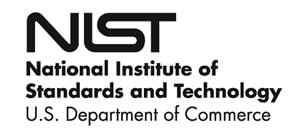RSS feed source: National Science Foundation
Using a new optical system, scientists at the U.S. National Science Foundation National Solar Observatory and the New Jersey Institute of Technology have captured the most detailed images of the complex movements in the sun’s atmosphere, the corona. The technology will allow scientists to better understand the extreme nature of the corona and produce computer models that more accurately predict space weather and potential Earth-impacting solar flares.
The researchers developed the new coronal adaptive optics system at the NSF-funded Goode Solar Telescope in California. Similar to a camera’s “autofocus” feature, the adaptive optics system continuously adjusts to counteract the blurring effect of the Earth’s atmosphere while isolating and zooming in on dynamic coronal features. The results of the study were published in Nature Astronomy.
RSS feed source: National Science Foundation
While quantum technology may seem like a new field, it’s been around for a while and has a fascinating history — much of which involved NIST’s experts.
Click this link to continue reading the article on the source website.
RSS feed source: National Science Foundation
Researchers have designed a liquid hydrogen storage and delivery system that could help make zero-emission aviation a reality. Their work outlines a scalable, integrated system that addresses several engineering challenges at once by enabling hydrogen to be used as a clean fuel and also as a built-in cooling medium for critical power systems aboard electric-powered aircraft.
Click this link to continue reading the article on the source website.
RSS feed source: National Science Foundation
Synopsis
The intent of this solicitation is to request proposals from organizations who are willing to serve as resource providers within the NSF Advanced Computing Systems and Services (ACSS) program. Resource providers would (1) provide advanced cyberinfrastructure (CI) resources in production operations to support the full range of computation, data-analysis, and AI research across all of science and engineering (S&E), and (2) enable democratized and equitable access to the proposed resources. The current solicitation is intended to complement previous NSF investments in advanced computational infrastructure by provisioning resources, broadly defined in this solicitation to include systems and services, in two categories:
Category I, Capacity Resources: production computational resources maximizing the capacity provided to support the broad range of computation, data analytics and AI needs in S&E research; and Category II, Innovative Prototypes/Testbeds: innovative forward-looking capabilities deploying novel technologies, architectures, usage modes, etc., and
Click this link to continue reading the article on the source website.

